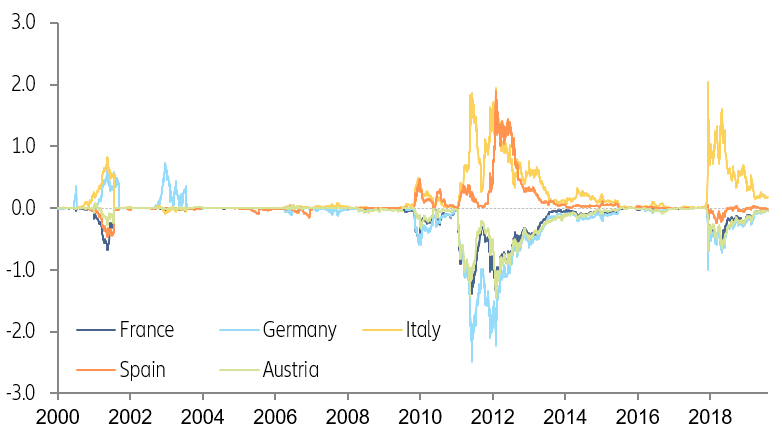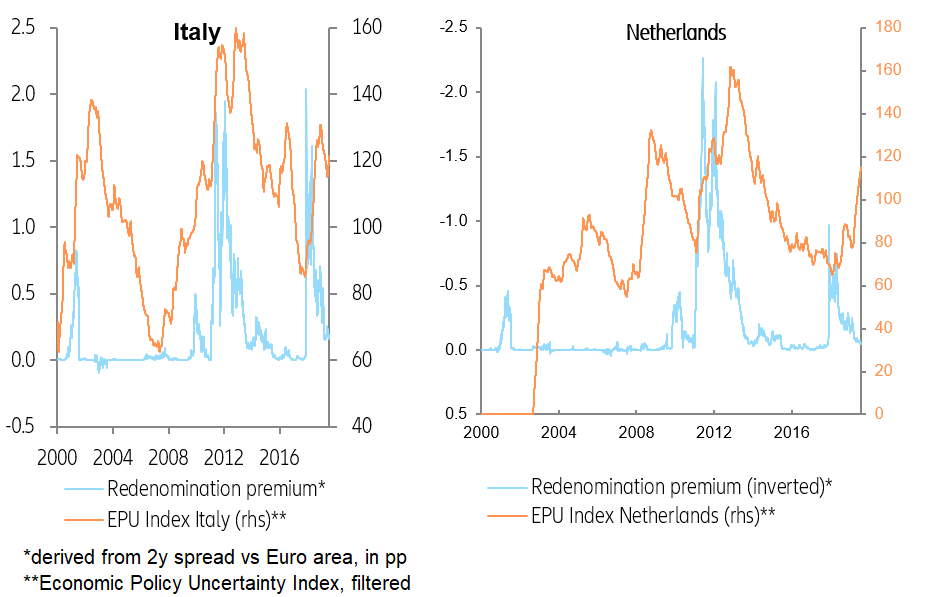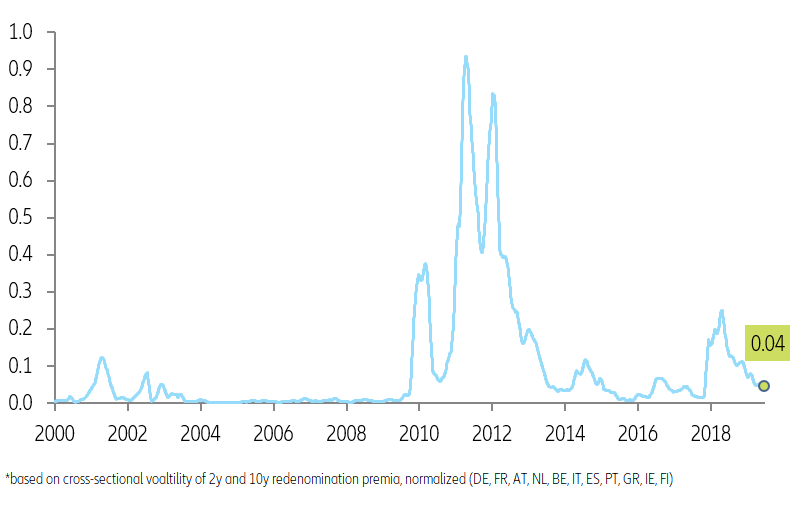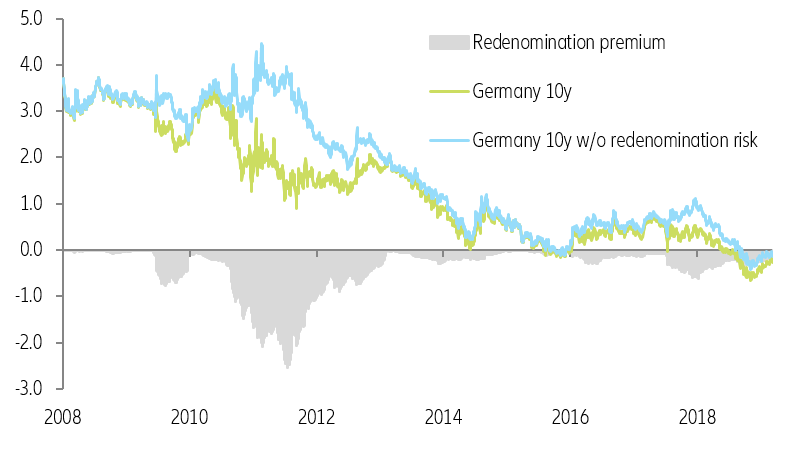Executive Summary
- As a legacy of the euro crisis, the reversibility of Eurozone membership has become a generally accepted risk, especially for euro government bonds. The European Central Bank bail-out commitment (“Whatever it takes” and Outright Monetary Transactions, OMT) has capped the risk below systemic levels – for now. But euro government bonds do include a premium for redenomination risk, i.e. the risk of being redenominated into a new national currency. Redenomination premia happen to be important drivers of euro sovereign yields, influencing the steepness of the curve and contributing to the low yield level in core Eurozone countries.
- Using the redenomination premia of 11 Eurozone countries, we introduce the “Allianz Euro Fragility Index” to capture the systemic tail risk of a Eurozone breakup. While it stands at 0.04, implying low overall risk currently, it is very likely that we will again experience phases of increased redenomination risk as its underlying causes, namely the perceived weakness of the euro architecture and political uncertainty, persist.
- Looking at the implied exit probabilities for each Eurozone member, we find the probability of an Italian exit is currently around 6%. For France it is around 1% and for Germany around 2%.
Italeave, Frexit, Oustria … besides linguistic creativity, these neologisms indicate a general awareness of the Eurozone membership potentially being reversible. For capital markets, this implies that all euro-denominated assets should actually bear the risk of being “re-denominated”, at least if they are issued under local law. This redenomination risk is most apparent for government bonds as they are most closely linked to the sovereign lex monetae[1]. In this paper, we extract the redenomination premium from euro sovereign spreads for the 2 year and 10 year maturities. We concentrate on the spreads against the volume weighted Eurozone yield curve[2]. This implies the survival of the Eurozone in one form or another. We therefore place ourselves in a scenario of a partial break-up (unlike when using the spread over German bunds, where the bilateral approach implies a total Eurozone break-up).
Figure 1: Evolution of euro sovereign spreads (10y vs Eurozone, in pp)











